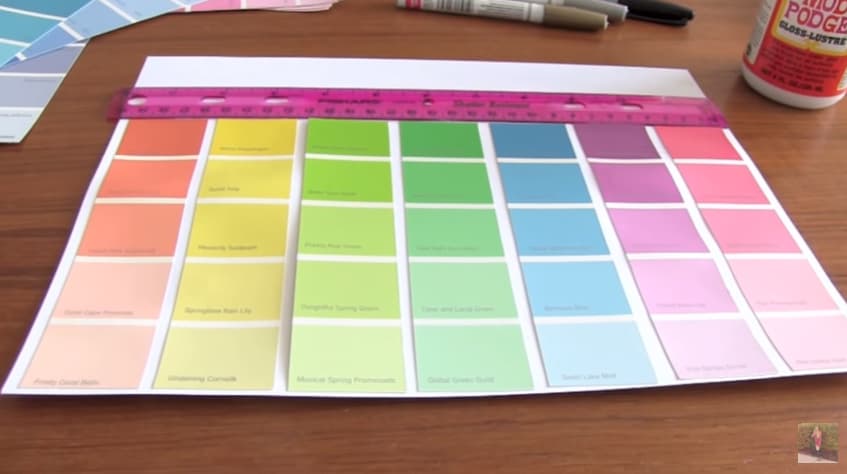Engineering plays a crucial role in shaping our future. It involves applying scientific and mathematical principles to design, develop, and improve structures, machines, systems, and processes. And what better way to introduce kids to the fascinating world of engineering than through a hands-on project like building and testing paper bridges?
In this article, we will explore the basics of engineering, delve into the concept of bridge building, and provide a step-by-step guide to constructing and testing a paper bridge.

Understanding the Basics of Engineering
What is Engineering?
Engineering is the field of study and practice that deals with applying scientific and mathematical knowledge to create solutions to real-world problems. It involves designing, building, and maintaining structures, machines, systems, and processes.
The Role of Engineers in Society
Engineers play a vital role in society by using their knowledge and skills to improve people’s lives. They are responsible for creating innovative solutions, inventing new technologies, and ensuring the safety and functionality of various structures and systems.
Different Types of Engineering
Engineering is a vast field with various disciplines. Some common types of engineering include civil engineering, mechanical engineering, electrical engineering, and chemical engineering. Each discipline focuses on specific areas and applications, providing diverse opportunities for aspiring engineers.
Civil engineering, for example, involves the design and construction of infrastructure such as roads, bridges, and buildings. Civil engineers use their expertise to ensure that these structures are safe, durable, and able to withstand various environmental conditions. They consider factors such as load capacity, material strength, and environmental impact to create sustainable and efficient designs.
Mechanical engineering, on the other hand, focuses on the design and development of mechanical systems and machines. Mechanical engineers work on a wide range of projects, from designing engines and turbines to developing robotics and automation systems. They apply principles of physics and materials science to create innovative solutions that improve efficiency and performance.
The Concept of Bridge Building
Importance of Bridges
Bridges are essential structures that connect two points and facilitate the transportation of people, vehicles, and goods. They allow us to overcome physical barriers such as rivers, valleys, and canyons, ensuring efficient and convenient travel.
Imagine a world without bridges. Traveling from one side of a river to another would require long detours or even dangerous crossings. Goods would be difficult to transport, and communities would be isolated from each other. Bridges have played a crucial role in the development of civilizations, enabling trade, connecting people, and fostering economic growth.
Basic Principles of Bridge Construction
Constructing bridges requires careful planning, design, and engineering knowledge. The basic principles of bridge construction involve factors such as load-bearing capacity, structural stability, materials used, and environmental considerations. Engineers must consider all these aspects to create safe and durable bridges.
Load-bearing capacity is a fundamental principle in bridge construction. Engineers need to calculate the maximum weight a bridge can support to ensure it can withstand the forces exerted by vehicles, pedestrians, and environmental factors such as wind and earthquakes. By understanding the load-bearing capacity, engineers can design bridges that can safely handle the expected traffic and potential unforeseen circumstances.
Structural stability is another critical aspect of bridge construction. Bridges must be able to withstand the forces of nature, such as strong winds, heavy rain, and even earthquakes. Engineers use advanced mathematical models and simulations to analyze the structural integrity of a bridge and ensure it can withstand these external forces without compromising its stability.
Introduction to Paper Bridges
What is a Paper Bridge?
A paper bridge is a small-scale model of a bridge constructed using paper and other simple materials. It provides an excellent opportunity for kids to learn about engineering principles through a hands-on activity that encourages creativity and problem-solving.
Imagine the excitement on a child’s face as they embark on a journey to build their very own bridge. With just a few materials and a dash of imagination, they can bring their engineering dreams to life. The beauty of a paper bridge lies not only in its simplicity but also in the valuable lessons it imparts.
As children delve into the world of paper bridges, they discover the importance of structural integrity, load-bearing capacity, and the significance of design. These concepts, once abstract and distant, become tangible and relatable as they manipulate paper and witness the bridge taking shape.
Materials Needed for Building a Paper Bridge
To build a paper bridge, you will need basic materials such as thick paper or cardstock, scissors, tape or glue, and a ruler. These materials are readily available and inexpensive, making it an accessible project for young engineers.
But let’s not underestimate the power of these seemingly ordinary materials. Thick paper or cardstock provides the foundation for the bridge, ensuring it can withstand the weight it will bear. Scissors become the architects’ tools, allowing them to shape and mold the paper into the desired structure. Tape or glue, the unsung heroes of the construction process, hold everything together, creating a cohesive and sturdy bridge. And the ruler, the guiding compass, ensures precision and accuracy in every measurement.
As children gather these materials, they are not just collecting objects; they are gathering the building blocks of their imagination. Each piece holds the potential to transform a simple sheet of paper into a remarkable feat of engineering.
Step-by-Step Guide to Building a Paper Bridge
Planning Your Bridge Design
Before starting construction, it is vital to plan your bridge design. Consider factors such as the length and width of the bridge, the type of load it needs to support, and any specific design features you want to include. Sketch out your ideas on paper and make adjustments as necessary.
When planning your bridge design, it’s important to take into account the environmental conditions in which your bridge will be placed. Will it be exposed to high winds? Will it need to withstand heavy rainfall? These factors can influence the materials and construction techniques you choose.
Constructing Your Paper Bridge
To construct your paper bridge, start by cutting out strips of paper for the base and vertical supports. Use tape or glue to connect the strips, ensuring they form a strong and stable structure. Pay attention to the angles and connections, as these determine the overall stability of your bridge.
As you construct your paper bridge, it’s fascinating to think about the engineering principles at play. The distribution of forces, the balance between tension and compression, and the overall structural integrity are all crucial elements to consider. By carefully aligning and connecting the strips of paper, you are essentially creating a miniature version of a real bridge.
Tips for a Stronger Paper Bridge
To strengthen your paper bridge, consider using additional strips of paper to reinforce critical areas, such as the joints or the center span. Experiment with different folding techniques or add trusses for increased stability. Remember to test your bridge as you go to identify any weak points and make necessary adjustments.
Another tip for building a stronger paper bridge is to explore different types of paper. Some papers may be more flexible or have a higher tensile strength, making them ideal for specific parts of your bridge. Don’t be afraid to experiment and discover the unique properties of various types of paper.
Testing Your Paper Bridge
Why We Test Bridges
Testing is a crucial part of engineering. It helps engineers evaluate the performance and durability of structures under various conditions. Testing a paper bridge allows kids to understand the importance of structural integrity and encourages them to develop problem-solving skills.
How to Test Your Paper Bridge
Testing your paper bridge can be exciting and educational. Place weights or objects of known mass on the bridge, gradually increasing the load. Observe how the bridge behaves under the weight and note any signs of bending, swaying, or instability. Document your findings and analyze the performance of your bridge.
Interpreting Your Test Results
After testing your paper bridge, it is essential to interpret the results. Did it withstand the load without collapsing? Were there any weak areas that need improvement? Use this opportunity to learn from the experience and make design modifications if necessary.
When analyzing your test results, consider the materials used in your bridge’s construction. Did you choose lightweight paper or opt for a sturdier cardstock? Understanding the impact of material selection on the bridge’s performance can provide valuable insights for future projects.
Additionally, take note of any unexpected findings during your testing process. Did the bridge exhibit any unique characteristics or behaviors? These observations can spark curiosity and lead to further investigations into the principles of physics and engineering.
In conclusion, introducing kids to the world of engineering through hands-on projects like building and testing paper bridges is an excellent way to foster creativity, problem-solving, and critical thinking skills. By understanding the basics of engineering, exploring the concept of bridge building, and following a step-by-step guide, kids can embark on an exciting journey into the world of engineering while having fun along the way.



